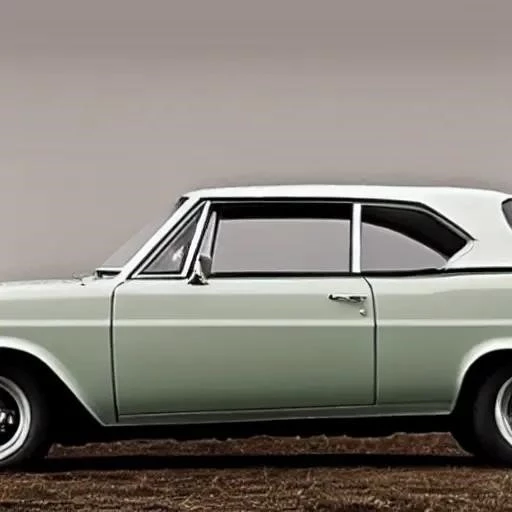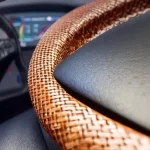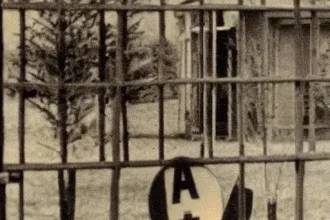In the illustrious tapestry of American muscle cars, the 1967 Plymouth stands as a beacon of raw power and undeniable style. These weren’t just vehicles; they were roaring statements, meticulously crafted machines designed to dominate drag strips and turn heads on Main Street. Yet, beneath their gleaming chrome and aggressive stances lies an often-overlooked engineering marvel: the integrated torque box subframe supports. These structural reinforcements, subtly woven into the unibody chassis, were the silent guardians of performance, ensuring that every ounce of horsepower translated into forward motion, not chassis twist.
Imagine the brutal force unleashed by a potent V8 engine, instantly twisting and contorting the car’s frame upon acceleration. Without adequate bracing, this torsional stress can lead to diminished handling, reduced traction, and long-term structural fatigue. This is precisely where the genius of Plymouth’s engineering shines through. By strategically reinforcing critical areas of the unibody—where the immense forces of the drivetrain and suspension converge—Plymouth designers endowed their 1967 models with an inherent rigidity, effectively creating a foundation robust enough to tame even the most formidable engines. These integrated “torque boxes,” though not always visible as distinct, bolt-on components, represented a sophisticated approach to managing the incredible stresses generated by high-performance driving, a design philosophy that continues to influence automotive engineering today.
Understanding Integrated Torque Management in 1967 Plymouths
While the term “torque box” often conjures images of aftermarket subframe connectors, 1967 Plymouth’s unibody construction incorporated vital, factory-engineered structural reinforcements that served the same critical function. Below is a summary of how these iconic vehicles managed torque:
| Feature/Category | Description/Details | Relevance to 1967 Plymouths |
|---|---|---|
| Concept: Integrated Torque Management | Refers to the factory design and construction techniques used to reinforce the unibody chassis against torsional flex and distortion caused by engine torque and suspension forces. | Fundamental to the performance and durability of all high-performance 1967 Plymouth models. |
| Key Models Benefiting | Primarily B-body cars (Belvedere, Satellite, GTX) and performance-oriented A-body cars (Barracuda, Valiant) equipped with big-block V8s (e.g., 426 Hemi, 440 Super Commando) or high-output small-blocks. | These powerful engines necessitated enhanced structural integrity to deliver their advertised performance effectively. |
| Structural Reinforcements | Included thicker gauge steel in critical areas (e.g., floor pans, frame rails, firewall, cowl), strategic boxing of frame sections, and additional spot welds or seam welds around suspension mounting points and drivetrain attachment areas. | These integrated design choices acted as the functional equivalent of “torque boxes,” preventing chassis twist. |
| Functional Purpose | To reduce chassis flex during hard acceleration, cornering, and braking; improve power transfer to the wheels; enhance handling predictability; and increase overall vehicle longevity. | Crucial for maintaining consistent tire contact with the road, especially under aggressive driving conditions. |
| Legacy & Aftermarket | The inherent strength of these unibody designs made them ideal candidates for aftermarket subframe connectors (often referred to as torque boxes by enthusiasts) to further boost rigidity for racing or extreme street performance. | Highlights the foundational quality of the original engineering, providing a strong base for future modifications. |
| Reference Link | Allpar.com: The 1967 Plymouth Belvedere GTX (General historical context and model information) | |
For enthusiasts and collectors, understanding these integrated reinforcements is paramount. While not always a distinct, bolt-on “box” as seen in some later designs or aftermarket solutions, Plymouth’s unibody architecture for its 1967 performance models was incredibly sophisticated. They featured strategically boxed frame sections, thicker gauge steel, and reinforced areas around the front and rear suspension mounting points. Consider the iconic Plymouth GTX, a B-body powerhouse. Its robust platform was meticulously engineered to withstand the prodigious output of its available 440 Super Commando or legendary 426 Hemi engines. These weren’t mere cosmetic upgrades; they were foundational improvements, providing a remarkably stable platform that allowed the suspension to work more efficiently, translating raw power into exhilarating, controlled motion.
The impact of these hidden strengths was profound. Drivers experienced improved traction off the line, reduced chassis creaks and groans over rough terrain, and a more predictable, planted feel during spirited driving. This forward-thinking design not only contributed to the legendary performance capabilities of these vehicles but also enhanced their durability, ensuring that many of these classic machines are still roaring down roads today, decades after their initial production. Expert restorers often praise the inherent strength of these unibodies, noting how well they’ve held up against the ravages of time and countless miles. By integrating insights from advanced structural engineering, Plymouth truly built cars that were ahead of their time, anticipating the demands that powerful engines would place on their chassis.
Today, the legacy of these integrated torque management solutions continues to inspire. Modern vehicle manufacturers, even those producing electric vehicles with instantaneous, massive torque, grapple with similar challenges of chassis rigidity. The principles pioneered in classics like the 1967 Plymouth—of intelligently distributing stress and reinforcing critical load-bearing points—remain incredibly relevant. It’s a testament to the enduring foresight of those engineers who, with slide rules and drafting tables, laid the groundwork for high-performance automotive design. The enduring appeal of these vintage machines isn’t just about their looks or their engines; it’s also about the fundamental, robust engineering that made their power usable and their legend everlasting.
So, the next time you marvel at a pristine 1967 Plymouth, remember the unsung heroes beneath its skin. These integrated torque box supports, a quiet testament to ingenious design, are not just historical footnotes; they are the very backbone of what made these cars true American legends, driving innovation and delivering thrills that resonate even in our modern age. They represent a persuasive argument for the lasting value of thoughtful engineering, proving that sometimes, the most important strengths are those you can’t immediately see.






